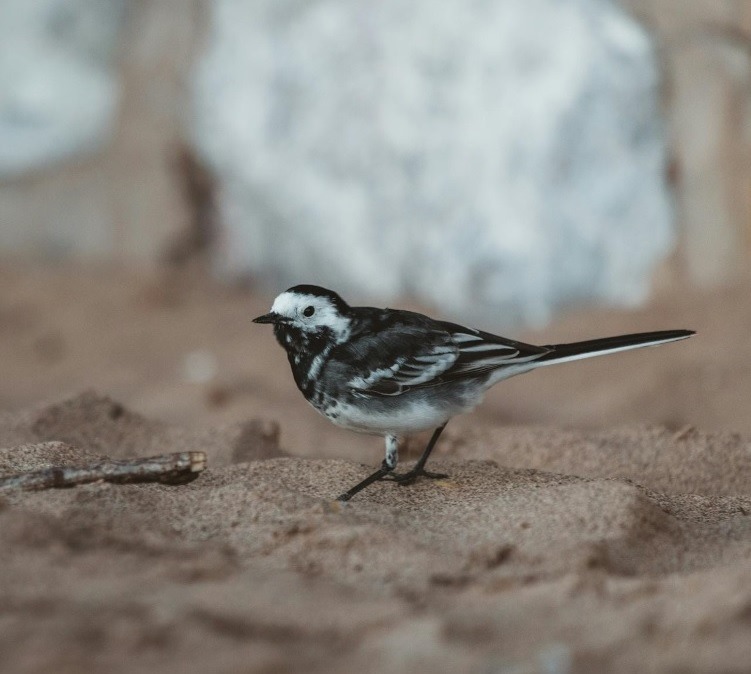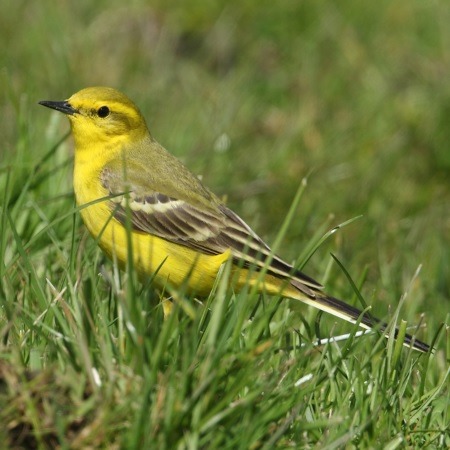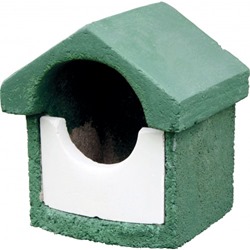
Bird Profile: Pied Wagtail
The pied wagtail is a small, long-tailed black and white bird. The wagtail gets its name because it does just that: continuously wags its tail!
We don't really know why these delightful birds wag their tails, but it could be a mechanism for communication and social signalling between individuals.
The pied wagtail is one of three types of wagtail seen in the UK, and is probably the most common one. The other two are the grey wagtail (which has a pale lemon under-tail) and the yellow wagtail, which is the least common and has a distinctive yellow and green colouration. Juvenile pied wagtails can be more of a greyish colour, and so they are sometimes mistaken for grey wagtails.
Pied Wagtail Statistics
- Length: 18cm
- Wingspan: 28cm
- Weight: 21g
- Average lifespan: 2 years
Pied Wagtail Food
Wagtail Nesting Boxes
Pied Wagtails: More Information
Pied wagtails are insectivores and opportunistic. They feed on flying insects and those that live on the ground, but will search for easy pickings. We don't have horses on our farm anymore, but when we did, pied wagtails were constant companions out in the paddocks. We often saw them rooting around in horse dung for an insect or two!
Pied wagtails love cars—they will happily peck away at spiders' webs, radiator grills, etc. Plus they seem to enjoy catching sight of themselves in car wing mirrors!
Farm vehicles are also enticing since they offer lots of muddy sites in which to feed. Here on the farm, we frequently spot wagtails rooting around amongst our old machinery (as well as in our garden shed).
Pied wagtails can be seen in a wide variety of habitats, and are just as comfortable in urban environments as they are beside streams and reed beds. They don't particularly like cold weather, and during the winter months they form large roosts to keep warm at night. The largest roosts can hold hundreds of wagtails!
If winter temperatures drop significantly, pied wagtails will head south for warmer climes to avoid the worst of the UK weather.
A few more fun facts about pied wagtails...
- The maximum recorded age for a pied wagtail is 11 years and 3 months.
- Each pair of wagtails will usually try and nest two or three times during the summer months. They build their nests out of twigs, grass, dead leaves and moss with a lining of hair, wool and feathers. Anything goes really!
- Female pied wagtails build their nests with no assistance from the males, but both of them co-parent and feed their young once hatched.
- Buckingham Palace supports a wagtail roost.
- Numbers of pied wagtails in Britain are on the increase, which is good news!
Have you spotted any pied wagtails in your garden? If you have any photos, we'd love to see them - send your pictures to sales@reallywildbirdfood.co.uk!

Pied Wagtail, Grey Wagtail & Yellow Wagtail


































































































 Live Wax Worms
Live Wax Worms  Super Suet Fat Balls - With Insect
Super Suet Fat Balls - With Insect  Mealworm Suet Pellets
Mealworm Suet Pellets  Sunflower Heart Chips
Sunflower Heart Chips  Live Mini Mealworms
Live Mini Mealworms  Live Mealworms
Live Mealworms  Dried Mealworms
Dried Mealworms  Insect Suet Pellets
Insect Suet Pellets  Giant Robin Nester/ Roost Pocket
Giant Robin Nester/ Roost Pocket  Simon King Brushwood Robin Nester
Simon King Brushwood Robin Nester  Viborg Cedar Open Nest Box
Viborg Cedar Open Nest Box  WoodStone® Small Open Fronted Nest Box
WoodStone® Small Open Fronted Nest Box  Natural Log Robin Nest Box
Natural Log Robin Nest Box  Blackbird Nester
Blackbird Nester 